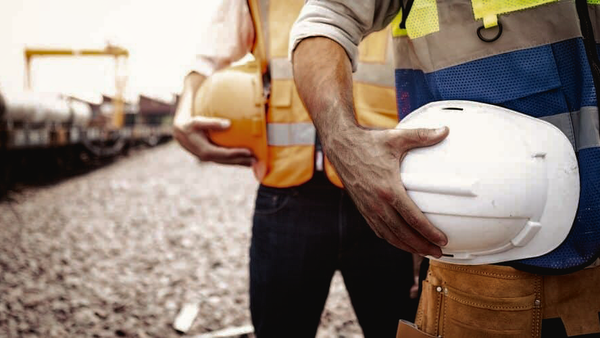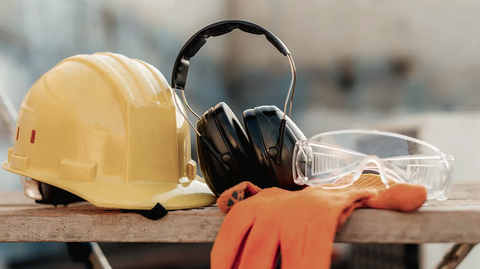How to implement the hierarchy of controls in Australian workplaces
Share

The ‘hierarchy of controls’ is a risk-management framework. It outlines a prioritised approach to implementing effective safety control protocols in the workplace.
Developed by safety professionals and regulatory bodies, the framework provides a systematic method for reducing or eliminating hazards and minimising the associated risks.
In Australia, Safe Work Australia promotes the hierarchy of controls as a fundamental principle for managing workplace risks. Safe Work Australia is the national policy body for workplace health and safety.
By following the hierarchy of controls, a PCBU (Person Conducting a Business or Undertaking), or employer, can create a safer working environment and comply with their obligations under Australia’s model Work Health and Safety (WHS) laws.
1. Understanding the hierarchy of controls
The hierarchy of controls consists of six levels, arranged in descending order of effectiveness.
1. Elimination: The highest level necessitates complete removal of the hazard from the workplace, thereby eliminating the associated risks. Elimination is the most effective control measure and should be the first consideration whenever possible.
2. Substitution: If elimination is not practicable, the next step is to substitute the hazard with a less hazardous alternative. This could involve using a less toxic substance, a safer process or replacing hazardous equipment with a less dangerous alternative.
3. Isolation: When hazards cannot be eliminated or substituted, the next step is to isolate them from workers. This can be achieved through physical barriers, enclosures or creating a safe distance between workers and the hazard.
4. Engineering controls: These controls involve modifying the work environment, equipment or processes to reduce the risk. Examples include installing ventilation systems, using machine guarding or implementing ergonomic redesigns.
5. Administrative controls: When engineering control measures aren’t sufficient or practicable, administrative controls can be implemented. These involve developing safe work procedures, providing training and supervision and implementing job rotation or maintenance schedules.
6. Personal Protective Equipment (PPE): PPE should be considered as the last line of defence against hazards and should be used in conjunction with other control measures. Examples include safety glasses, hard hats, respirators and protective clothing.
2. Implementing the hierarchy of controls
To effectively implement the hierarchy of controls in Australian workplaces, employers should follow these steps:
Identify hazards
The first step is to identify all potential hazards in the workplace. This can be achieved through workplace inspections, consulting with workers, reviewing incident reports and conducting risk assessments. Hazards can be physical, chemical, biological, ergonomic or psychosocial.
Assess risks
Once hazards have been identified, employers must assess the associated risks by considering the likelihood of an incident occurring and the potential consequences. This assessment should consider the nature of the hazard, the work environment and the existing control measures.
Select appropriate control measures
Based on the risk assessment, employers should select appropriate control measures from the hierarchy of controls. It’s important to prioritise higher-level controls, such as elimination and substitution, as they are more effective in reducing risks.
Develop and implement control measures
After selecting the appropriate control measures, employers should develop and implement them in consultation with workers and health and safety representatives. This may involve modifying work processes, installing engineering controls, developing safe work procedures or providing training and personal protective equipment.
Monitor and review
Once control measures have been implemented, employers should monitor their effectiveness and review them regularly. This may involve conducting workplace inspections, monitoring incident reports and seeking feedback from workers. If control measures are found to be ineffective or new hazards emerge, the hierarchy of controls should be revisited and additional or alternative control measures should be implemented.

3. Consulting with workers and experts
Effective implementation of the hierarchy of controls requires close consultation with workers and health and safety experts.
Workers have valuable insights into the hazards they face in the workplace and the practicality of proposed control measures. Consulting with them ensures that control measures are appropriate and effective.
Additionally, employers may need to seek advice from occupational safety experts to ensure that control measures are designed and implemented correctly.
4. Legal obligations
Under the model WHS laws in Australia, employers have a duty to ensure the health and safety of workers and others affected by their work activities.
Employers must also comply with any other specific requirements outlined in the WHS regulations that apply to their type of workplace and work activities, such as regulations regarding hazardous chemicals, asbestos, noise and manual handling.
The duty to ensure worker health and safety requires eliminating or minimising risks as far as reasonably practicable. Implementing the hierarchy of controls is a key way employers can meet this duty.
Failing to comply with WHS responsibilities can result in significant financial penalties and potential prosecutions with possible jail time for employers if a breach results in a notifiable incident causing serious illness, injury or death.

Conclusion
Implementing the hierarchy of controls is a crucial step in creating safer Australian workplaces and reducing the risk of work-related illnesses, injuries and fatalities.
By following this systematic approach and prioritising the most effective control measures, employers can fulfil their legal obligations, create a culture of risk management and ensure the health and safety of their workers.
References
Safe Work Australia - Managing risks